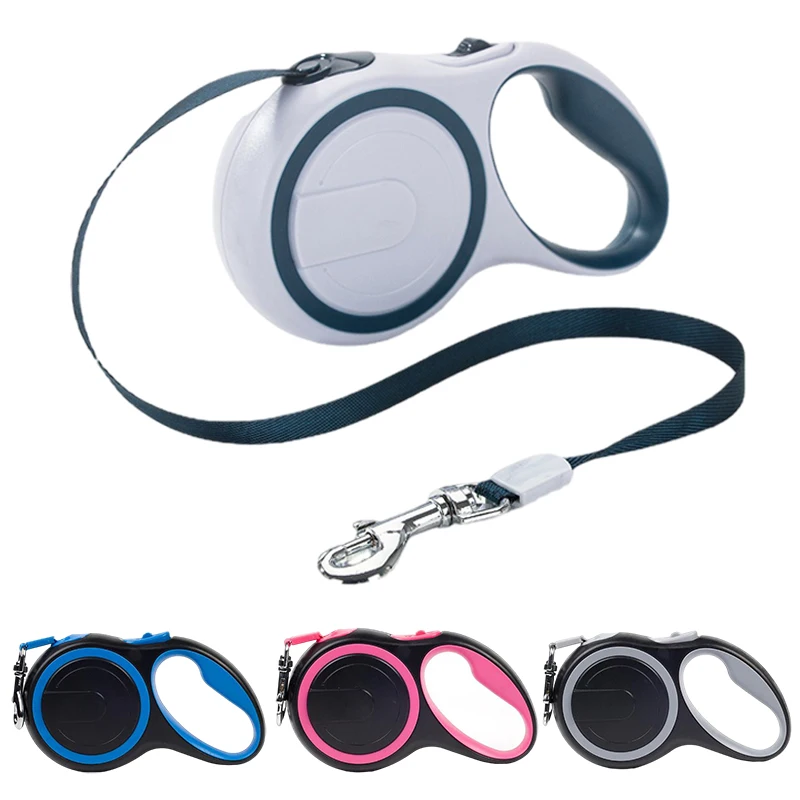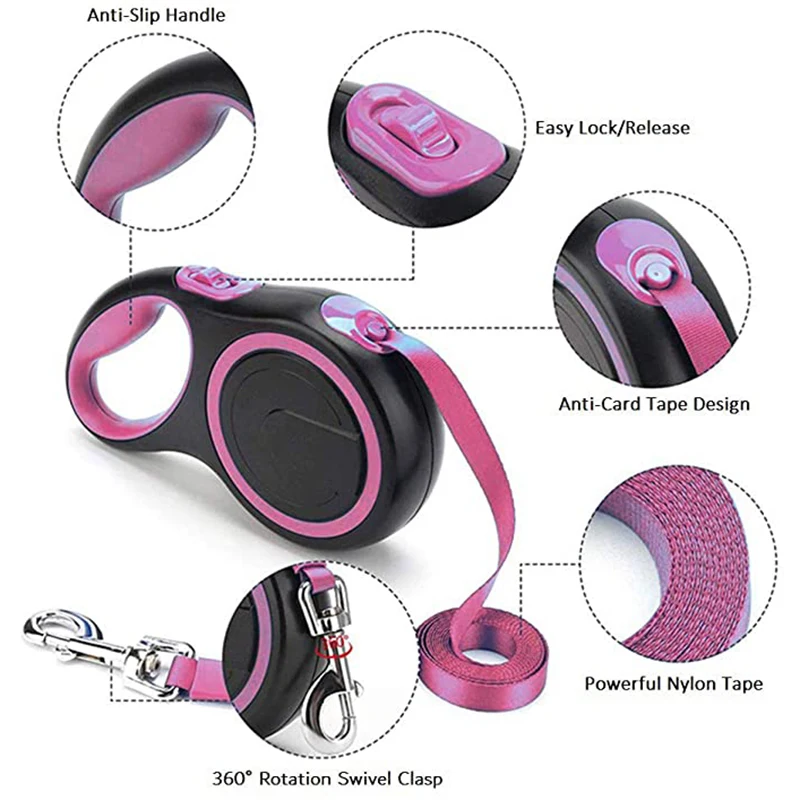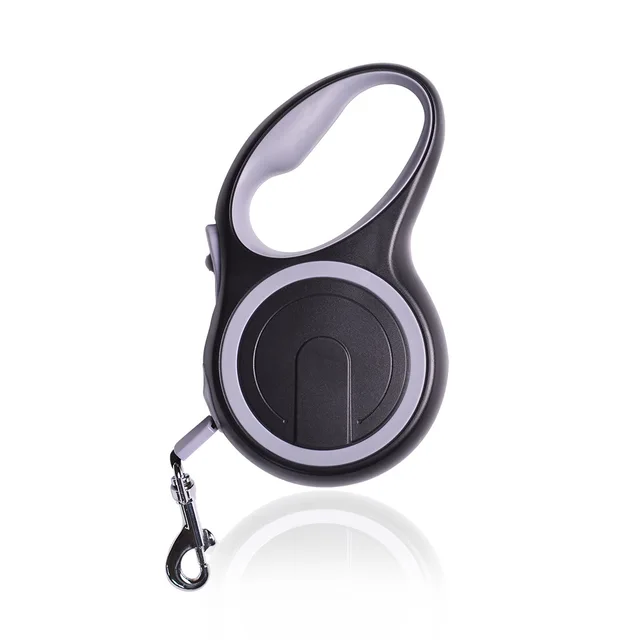Retractable leashes have become increasingly popular among dog owners, providing a unique blend of flexibility and control during walks. These leashes are designed to extend and retract, allowing dogs more freedom to explore while still being under the owner’s control. However, they come with both advantages and potential drawbacks that are worth considering. This article delves into the pros and cons of retractable leashes to help dog owners make informed decisions.
Understanding Retractable Leashes
What is a Retractable Leash?
A retractable leash consists of a flexible cord or tape wound around a spring-loaded mechanism within a plastic casing. This design allows the leash to extend to various lengths, typically ranging from 10 to 30 feet, and retract back into the casing when not in use. Retractable leashes are equipped with a locking mechanism that allows owners to control the length of the leash and keep the dog at a desired distance. This flexibility is a significant departure from traditional fixed-length leashes, providing a new level of convenience and control.
How Retractable Leashes Work
The mechanism inside a retractable leash involves a coiled spring that helps the cord or tape extend and retract smoothly. When the dog pulls, the leash extends, and when the dog stops or moves closer, the leash retracts back into the casing. Most retractable leashes come with a button or lever that locks the leash at a specific length, allowing owners to maintain control over their dog’s range of movement. This feature is particularly useful in various walking scenarios, from busy urban streets to open parks.

Advantages of Retractable Leashes
Enhanced Freedom for Dogs
One of the primary benefits of retractable leashes is the increased freedom they offer dogs. Unlike traditional leashes, which are typically limited to a fixed length, retractable leashes can extend up to 30 feet, allowing dogs to roam and explore more freely. This can be especially beneficial for high-energy breeds or those that enjoy sniffing around and exploring their environment. The added freedom can make walks more enjoyable for dogs, providing them with physical and mental stimulation.
Greater Control for Owners
Despite the increased freedom for dogs, retractable leashes also offer a degree of control for owners. The ability to lock the leash at a specific length allows owners to manage their dog’s movements and keep them within a safe distance. This can be particularly useful in situations where immediate control is needed, such as encountering other dogs, navigating crowded areas, or walking near traffic. The retractable feature also means that owners can easily adjust the length of the leash depending on the situation, enhancing overall control.
Versatility in Different Environments
Retractable leashes are versatile tools that can be used in a variety of environments. Whether walking in a park, hiking on trails, or strolling through urban areas, the adjustable length of a retractable leash provides flexibility. In open spaces, the extended length allows dogs to explore and run, while in more confined areas, the leash can be shortened to ensure safety and control. This adaptability makes retractable leashes suitable for a wide range of activities and environments.
Disadvantages of Retractable Leashes
Potential Safety Risks
While retractable leashes offer increased freedom, they also come with safety concerns. The thin cord or tape used in these leashes can pose a risk of injury if not handled properly. For instance, if a retractable leash not lock correctly, a dog may suddenly dart out, leading to potential accidents. Additionally, the cord can cause injuries if it gets tangled around objects or other people. There is also a risk of burns or cuts if the cord retracts quickly or if it gets wrapped around the owner’s hand or arm.
Challenges in Training and Control
Retractable leashes can sometimes create challenges in training and controlling a dog. The extended length may encourage dogs to pull or engage in undesirable behaviors, as they have more room to roam. This can make it difficult for owners to maintain consistent leash training and reinforce good walking habits. Additionally, the mechanism of retractable leashes can be cumbersome to use, especially if the leash becomes tangled or if the locking mechanism fails. This can complicate the process of managing a dog’s behavior during walks.

Durability and Maintenance Issues
Retractable leashes are not without their maintenance issues. Over time, the retractable mechanism and cord can wear out or become damaged, affecting the leash’s functionality. The internal spring and locking mechanism may also require regular maintenance to ensure smooth operation. Additionally, the plastic casing of the leash can be prone to cracks or breaks, particularly if the leash is dropped or subjected to rough handling. This can result in the need for frequent replacements or repairs.
Choosing the Right Retractable Leash
Key Features to Consider
When selecting a retractable leash, it’s important to consider several key features to ensure it meets your needs. Look for a leash with a sturdy and durable casing, a reliable locking mechanism, and a cord or tape that suits your dog’s size and strength. Some leashes come with additional features such as ergonomic handles, built-in lights, or reflective elements for added safety. Assessing these features can help you choose a leash that provides both functionality and comfort for you and your dog.
Evaluating Size and Strength
Retractable leashes come in various sizes and strengths, so it’s important to choose one that matches your dog’s size and weight. For smaller dogs, a lightweight leash with a shorter cord may be sufficient, while larger or more energetic dogs may require a heavier-duty leash with a longer extension. Ensure that the leash can handle your dog’s strength and pulling force to avoid potential malfunctions or safety issues. Checking the manufacturer’s recommendations and reviews can provide valuable insights into the suitability of a leash for your specific needs.
Alternatives to Retractable Leashes
Traditional Leashes
Traditional fixed-length leashes remain a popular choice for many dog owners. These leashes offer a consistent length and straightforward control, making them ideal for training and managing dog behavior. They come in various materials, including nylon, leather, and rope, each offering different levels of comfort and durability. Traditional leashes are also less prone to mechanical issues and can be easier to maintain compared to retractable leashes.
Long Lines and Training Leashes
Long lines and training leashes provide an alternative to retractable leashes, particularly for training purposes. These leashes are typically longer than traditional leashes, ranging from 15 to 50 feet, and design for use in open spaces or during recall training. Long lines allow dogs to explore while still being under the owner’s control, offering a balance between freedom and management. Training leashes often come with additional features such as padded handles or reinforced materials for added comfort and durability.

Conclusion
Retractable leashes offer a unique blend of freedom and control, making them a popular choice among dog owners. They provide dogs with the ability to explore their surroundings while allowing owners to manage their movements effectively. However, they also come with potential drawbacks, including safety risks and maintenance challenges. By understanding the pros and cons of retractable leashes, dog owners can make informed decisions about whether this type of leash is the right fit for their walking needs and their dog’s behavior. Whether opting for a retractable leash or considering alternatives, the ultimate goal is to ensure enjoyable and safe walks for both dogs and their owners.










